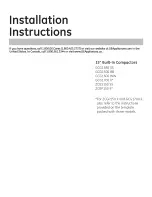
7-4
DS35-W00
May. 2007
CLUTCHCLUTCHCLUTCHCLUTCHCLUTCH
TRANSMISSIONTRANSMISSIONTRANSMISSIONTRANSMISSIONTRANSMISSION
ENGINEENGINEENGINEENGINEENGINE
HSTHSTHSTHSTHST
FRONT AXLEFRONT AXLEFRONT AXLEFRONT AXLEFRONT AXLE
STEERINGSTEERINGSTEERINGSTEERINGSTEERING
BARKEBARKEBARKEBARKEBARKE
ELECTRICELECTRICELECTRICELECTRICELECTRIC
INDEXINDEXINDEXINDEXINDEX
HYDRAULICHYDRAULICHYDRAULICHYDRAULICHYDRAULIC
GENERALGENERALGENERALGENERALGENERAL
REAR AXLEREAR AXLEREAR AXLEREAR AXLEREAR AXLE
CK22/CK22H
196W602A
2.2 FEATURES OF WET DISC BRAKES
A. REDUCED DISC WEAR
Although wet discs are worn by approximately several
tens of microns depending on the initial contact in ini-
tial period (50 hours or so) of use, almost no wear
occurs afterwards. This means that brake adjustments
are eliminated.
B. STABLE BRAKING
Since the brake discs are immersed in transmission
oil, loss is rarely caused even after repeated braking
and a stable braking force is obtained.
C. PEDAL STROKE DOES NOT CHANGE UN-
DER INFLUENCE OF HEAT.
Unlike internal expanding type brakes, in which the
drum-to-shoe clearance increases due to thermal ex-
pansion and results in increased pedal stroke, the wet
disc brake provides a constant pedal stroke.
(Reference)
•
Relationship between temperature and friction.
BRAKE - OPERATING PRINCIPLE
Summary of Contents for CK22
Page 1: ...WORKSHOP MANUAL CK22 CK22H TRACTORS...
Page 2: ......
Page 4: ......
Page 6: ......
Page 52: ...MEMO...
Page 92: ......
Page 94: ......
Page 132: ...MEMO...
Page 186: ...MEMO...
Page 190: ......
Page 202: ......
Page 204: ......
Page 280: ...MEMO...
Page 282: ......
Page 286: ......
Page 332: ...MEMO...
Page 334: ......













































